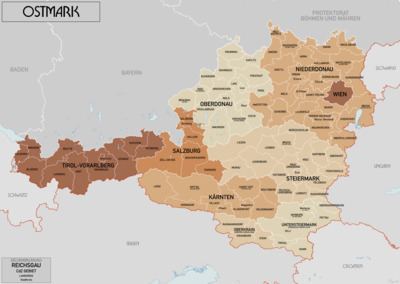1938–1939 → Disestablished 1939 | Established 1938 | |
 | ||
Ostmark ( [ˈʔɔstmaʁk], "Eastern March") was the name used by Nazi propaganda from 1938 to 1942 to replace that of the formerly independent Federal State of Austria after the Anschluss with Nazi Germany.
Contents
Lost places sanatorium wienerwald was blieb vom ss heim ostmark
Overview
After Austrian-born Adolf Hitler had finally completed union between his birth country and Germany (Anschluss) the Nazi government had the incorporated territory renamed: the name Austria (Österreich in German, meaning "Eastern Realm") was at first replaced by "Ostmark", referring to the 10th century Marcha orientalis. The change of name was meant to refer to Austria as now being the "eastern march" of the Reich.
In August 1938, the Donau-Zeitung proudly referred to Passau as "the cradle of the new Ostmark".
Subdivision
According to the Ostmarkgesetz with effect from 1 May 1939 the former States of Austria were reorganized into seven Reichsgaue, each under the rule of a government official holding the dual offices of Reichsstatthalter (governor) and Gauleiter (Nazi Party leader):
A Reichsgau was a new, simple administrative sub-division institution which replaced the federal states in the otherwise completely centralized Third Reich. From 1942, as the term "Ostmark" was still too reminiscent of the old, independent state of Austria, the chosen official name for the seven entities was Donau- und Alpenreichsgaue ("Danubian and Alpine Reichsgaue"). In the course of the Allied occupation after World War II, the Austrian state was restored in its pre-1938 borders according to the 1943 Moscow Declaration.
